To use ERP software, organizations must first assess their systems, define goals, choose an ERP system, configure the system, prepare and migrate data, test the system, train employees, and implement the system fully. ERP software helps manage day-to-day business activities such as accounting, procurement, project management, risk management and compliance, and supply chain operations.
Focus on data quality to ensure that the ERP system provides rich, accurate, and accessible data. ERP systems can be as complicated as the business they support, so careful planning and clear goals are essential to ensure successful implementation. We’ll explore beginner’s guide on how to use ERP software and the benefits of ERP systems.

Credit: www.softwaretestinghelp.com
Using Erp Software For Beginners
For beginners looking to learn how to use ERP software, it is important to focus on data quality and design standards for data entry. ERP systems can be complicated, but by centralizing data flow and managing day-to-day business activities, these software programs help organizations grow and succeed.
P Software for Beginners If you’re new to ERP software, this guide will help you navigate the basics of assessing your current systems, defining scope and goals, choosing an ERP system, configuring it to your requirements, preparing and migrating data, testing the system, and training your employees. Assessing Current Systems Before diving into ERP software, it’s important to assess your current systems. This will help you understand the strengths and weaknesses of your current processes and identify areas where an ERP system can be most beneficial. Take the time to evaluate your business processes and workflows, and identify any inefficiencies or bottlenecks that are hindering productivity. Defining Scope and Goals Once you have assessed your current systems, you will need to define the scope and goals of your ERP implementation. Identify the specific areas of your business that you want to improve with the use of an ERP system and set clear goals and milestones for achieving them. This will give you a clear roadmap for selecting the right ERP software and configuring it to your business processes. Choosing an ERP System With your scope and goals defined, it’s time to choose an ERP system. Consider factors such as scalability, ease of use, cost, and support when evaluating ERP software options. Look for a system that can adapt to your unique business needs and can grow with your business over time. Make sure it also has a robust support community and vendor support. Configuring Your ERP System After you have selected an ERP system that suits your needs, the next step is to configure it to your requirements. This means tailoring the system to your business processes, workflows, and data management needs. Don’t rush this process, as it is critical to the success of your ERP system. Take the time to ensure that your system is set up to execute your business processes seamlessly. Preparing and Migrating Data Before deploying your ERP system, you need to prepare your data for migration. This involves cleaning up your data and ensuring that it is readily accessible for migration. Verify that all data has been accurately migrated, and check for any discrepancies before proceeding. Testing the ERP System One of the most critical steps in the ERP implementation process is thorough testing. To ensure that your system is functioning as expected, put your ERP system through a series of rigorous tests before deployment. Test all core functionality and processes, as well as any customizations or integrations. Training Employees on the New ERP System Your employees are a critical part of the ERP implementation process. Once the system is in place, it is essential to provide comprehensive training to all employees who will be using the system. This will ensure that your team is comfortable with the new system and can use it effectively. Implementing the New ERP System Fully Once your system has been tested and your employees are trained, it’s time to go live with your new ERP system. Ensure that you follow a well-defined implementation plan, including a phased rollout if necessary. Monitor the system closely, and be prepared to make adjustments as needed. In conclusion, implementing an ERP system can be a daunting task, but by following the steps outlined above, you can ensure a successful implementation. Remember to assess your current systems, define the scope and goals of your ERP implementation, choose the right ERP system, configure it to your business processes, prepare and migrate your data, test the system, train your employees and fully implement the system. By following these steps and selecting the right ERP system for your organization, you can streamline your business processes, improve productivity and grow your business.
Credit: www.youtube.com
How To Work On Erp Software For Beginners
If you’re a beginner learning how to use ERP software, focus on data quality to ensure your system can manage rich, accurate, and accessible information. Take time to design data entry standards, naming conventions, and document versioning to optimize data flow.
Remember that the complexity of an ERP system depends on your business needs.
How to Work on ERP Software for Beginners Managing day-to-day business operations can be a daunting task, especially when you have to handle them all manually. This is where ERP software comes in – it helps automate the core business processes and increases efficiency. But for a beginner, using an ERP system can be overwhelming. Here are a few tips on how to work on ERP software for beginners. Focusing on Data Quality Your ERP system helps you manage data flow. Therefore, it’s imperative that the data is rich, accurate, and accessible. However, this can be challenging if the data quality is not up to par. Therefore, it’s essential to focus on data quality. To do this, first, identify the critical data that needs to be recorded in the system. Once you have identified the data, design standards for data entry. Ensure that the data entered is accurate, complete and consistent. Doing so will ensure that the data in the system is of high quality, enabling easy access and generation of reports. Designing Standards of Data Entry Designing standards for data entry is critical to ensure that data is of high quality. These standards include naming conventions for all the data entered. Use simple and clear names that are easy to understand. Another essential aspect of naming conventions is consistency. Ensure that the same naming conventions are used all over the system. This makes it easy for users to search for data in the system. Handling Document Versioning A key challenge for many organizations is document versioning. With multiple users accessing and editing a document, it’s essential to keep track of the various versions. In an ERP system, you need to handle document versioning correctly. To do this, ensure that the system has a feature for recording document versions. Additionally, establish a protocol for naming and saving different versions of documents. Finally, when distributing documents, ensure that users can identify the latest version. In conclusion, the key to managing an ERP system as a beginner is to focus on data quality using consistent naming conventions and handling document versioning correctly. By following these tips, you can be assured that your ERP system will be running smoothly and effectively.
Credit: salesblink.io
Frequently Asked Questions Of How To Use Erp Software
How Is Erp Software Used?
ERP software is used by organizations to manage day-to-day business activities such as accounting, procurement, project management, risk management, compliance, and supply chain operations. It centralizes valuable data and helps streamline business processes. ERP systems can be complicated, but beginners can start by assessing current systems, defining scope and goals, choosing an ERP system, configuring it, preparing data, testing it, and training employees.
Focus on data quality by designing standards for data entry.
How To Work On Erp Software For Beginners?
To work on ERP software as a beginner, focus on data quality by designing standards for data entry and handling document versioning. Assess current systems, define scope and goals, choose an ERP system, configure it, prepare and migrate data, test the system, train employees, and fully implement it.
Remember that ERP systems can be complicated because they support a large portion or the entire business, including financials, accounting, budgeting, and forecasting.
Is Erp Easy To Use?
ERP systems are as complicated as your business, but their ease of use depends on how well they are configured to your organization’s needs. ERP software manages day-to-day business activities, such as accounting, procurement, project management, risk management and compliance, and supply chain operations.
Take some time to design standards of data entry, including naming conventions and how to handle document versioning to make it easier to use.
Where Do I Start With Erp?
To start with ERP, you need to assess your current systems, define the scope and goals, choose an ERP system, configure and prepare the system, test it, and train your employees before implementing it fully. Focus on data quality and follow naming conventions.
ERP systems can be complicated, but they support various business functions, including accounting, budgeting, and forecasting.
Conclusion
ERP software plays a crucial role in managing day-to-day business operations and activities such as accounting, procurement, project management, risk management, and supply chain operations. To use ERP software effectively, you must focus on data quality, assess your current systems, define goals, choose the right ERP system, configure it, migrate data, test it, and train your employees on its functionality.
While it may seem intimidating at first, the benefits of implementing an ERP system in your business are numerous and can help streamline your processes, increase productivity, and improve overall efficiency.






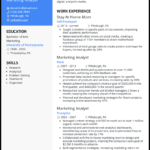
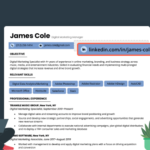

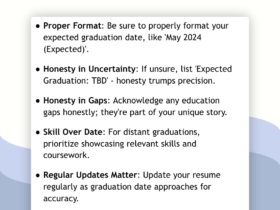
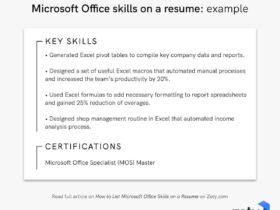
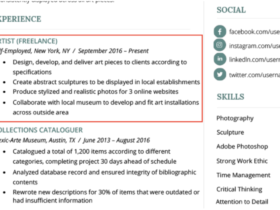
Leave a Reply